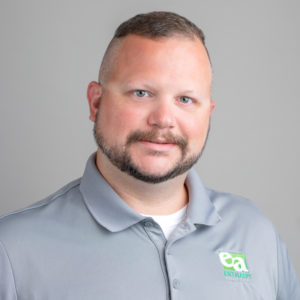The Environmental Protection Agency (EPA) recently issued an updated version of the Hazardous Organic NESHAP Maximum Achievable Control Technology (HON MACT) rule. A major objective of the new rule is to reduce fugitive/area source emissions of certain hazardous air pollutants, which EPA has determined pose an unacceptable risk to nearby communities.
This HON MACT requires certain covered facilities to perform ongoing fenceline monitoring using new and existing EPA Methods. The goal of fenceline monitoring is to measure the concentrations of hazardous pollutants, such as 1,3-butadiene; chloroprene; 1,2-dichloroethane; ethylene oxide; and, vinyl chloride.
Affected Clients
The updated HON MACT rules affect covered facilities, including Synthetic Organic Chemical Manufacturing Industry (SOCMI) facilities (those with chemical manufacturing processes producing commodity chemicals) and Group I and II Polymers and Resins Industry facilities, including those that operate elastomers production processes and resin production processes that use epichlorohydrin feedstocks1. Many of these facilities will be required to perform ongoing fenceline monitoring using existing EPA Methods 325A/B and/or draft EPA Method 327. There will be costs associated with the sampling and analysis, as well as remedial actions that will be required when sample results indicate the presence of target compounds above the action levels specified in the HON MACT.
Actions to Take
It is essential that laboratory clients, their clients, and impacted facilities submit comments to EPA regarding both the HON MACT and EPA Method 327. Enthalpy plans to submit comments to the EPA regarding both the HON MACT, and EPA Method 327, and we encourage our clients to do the same. Preliminary monitoring to allow facilities to determine whether or not they are in compliance with action levels prior to the rule(s) implementation is advised.
What Happens Next?
The EPA will review stakeholder comments and make changes they deem appropriate based on the comments. Compliance with fenceline monitoring requirements will likely be required in early to mid-2024.
The draft EPA Method 327 is based on practices and procedures from method TO-15, but there are many key differences between TO-15 and M327.These differences are aimed at improving the quality and consistency of the data acquired from the M327 fenceline monitoring. However, these changes also vastly increase the QA/QC burden on not only laboratories but also the persons collecting the field samples. The table below lists some key differences between method TO-15 and draft Method 327.
| M327 Requirement | TO-15 Requirement | Lab or Field requirement |
|---|---|---|
| Field Pressure Measurement Gauge – accurate to +/-0.25% full scale. | None | Field |
| All sampling locations must initiate sampling within 60 minutes of each other. | None | Field |
| Flow Control Flow Check. Prior to and after each field sampling event, establish or verify the flow rate of the sampling apparatus. This verification must occur in the field immediately prior to and after each field event. | None | Field |
| Canister Field Blanks. For each sample day, you must collect canister field blanks. | None | Lab/Field |
| Monitor and record the canister pressure downstream of the flow control device and the flow upstream of the flow control device on an hourly basis over a period of 24 hours. | A 2-minute flow controller check is discussed in section 8.3, but is not required. | Lab |
| Canister zero air and calibration standard checks and stability. Blanks and standards must be made in every canister before going into service and every 6 months. Known challenge and blank held for 7 days. Must be within 30% of known concentration. | None | Lab |
| If the post-test CCV is not within specifications, you must invalidate any results after the last successful CCV. | No post-test CCV required (only pre-test) | Lab |
| You must allow diluted canisters to equilibrate for a minimum of 12 hours before analysis. | None | Lab |
| The gas dilution system must be verified daily or per use (whichever is less stringent) per Section 3.2 of Method 205 using any available protocol gas and corresponding reference method. | None | Lab |
| The gas dilution system must be recalibrated once per calendar year using NIST traceable primary flow standards with an uncertainty ≤ 0.25%. | None | Lab |
- ENVIRONMENTAL PROTECTION AGENCY 40 CFR Parts 60 and 63 [EPA–HQ–OAR–2022–0730; FRL–9327–01– OAR] RIN 2060–AV71 New Source Performance Standards for the Synthetic Organic Chemical Manufacturing Industry and National Emission Standards for Hazardous Air Pollutants for the Synthetic Organic Chemical Manufacturing Industry and Group I & II Polymers and Resins Industry


